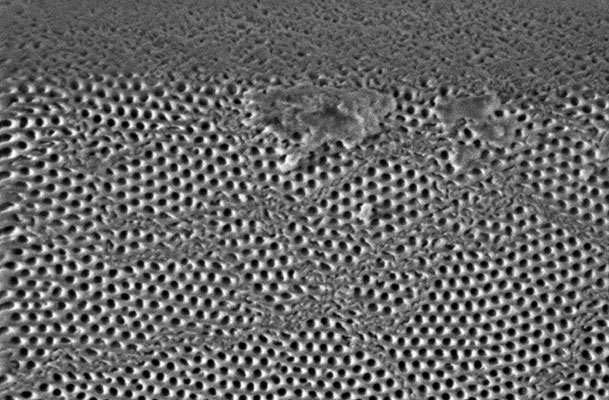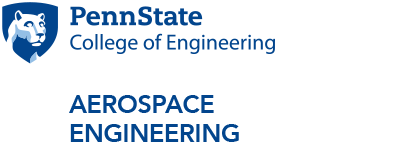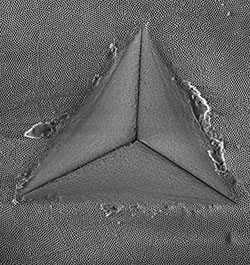
A zoomed-in image from a scanning electron microscope showing details of shear banding behavior of a nano-porous anodic aluminum oxide membrane. Photo credit: Jingyao Dai.
Aerospace engineer is getting tough on ceramics with Office of Naval Research grant
05/30/2017
UNIVERSITY PARK, Pa. — Namiko Yamamoto, assistant professor of aerospace engineering at Penn State, was recently awarded $447,663 through the Office of Naval Research (ONR) Sea-Based Aviation Airframe Structures and Materials program to study fundamental toughening mechanisms of novel ceramic composites and their use as alternative materials for high-temperature applications in the aerospace industry.
Through her project titled “Multi-functional Nano-porous Ceramics,” Yamamoto, in collaboration with Jogender Singh, professor in the Department of Materials Science and Engineering and chief scientist in Penn State’s Applied Research Laboratory, will seek to understand how the introduction of nano-pores into ceramics contributes to enhanced fracture toughness and increased damage tolerance, with minimal compromising of the material’s strength.
“Tougher ceramic materials are in high demand for numerous aerospace applications that require adequate mechanical strength, stability in extreme environments and lightweight materials,” said Yamamoto. “Although ceramics exist that meet those requirements, their applications as bulk structural materials are currently limited to their brittleness and low fracture toughness.”
Ceramics have a unique combination of material properties such as low density, high strength at high temperatures, wear resistance, corrosion resistance and low thermal and electrical conductivities. However, when high stress is placed on them, premature or catastrophic failure can occur.
Recently, some unique deformation behaviors have been observed when nano-porous ceramics are indented, including shear banding of collapsed pores. If controlled, this quasi-plastic deformation could potentially contribute to intrinsic toughening of ceramics and effectively mitigate crack initiation and propagation.
“Systematic understanding is currently missing about shear banding and its relation to fracture toughness of nano-porous ceramics,” said Yamamoto. “By conducting multi-scale parametric studies, we hope to gain the knowledge that is critical to the acceleration of practical fabrication and use of macro-scale nano-porous ceramic materials with increased damage tolerance. Also, through field-assisted sintering technology, we will pursue scalable manufacturing of such nano-porous ceramics.”
If successful, the toughened nano-porous ceramics could find use as alternative materials for high-temperature and high-shear loading applications in aerospace engineering parts, helicopter rotor heads, ball-point bearings, gear boxes, thermal and physical protection layers, abrasive cutting tools and more.
Funding for the project will span three years and will support ONR’s interest in the field of Sea-Based Aviation Airframe Structures and Materials.
Yamamoto also received an ONR grant in 2016 for her research proposal titled “1D-Patterned Nanocomposites Structured Using Oscillating Magnetic Fields.”



 Namiko Yamamoto, assistant professor of aerospace engineering
Namiko Yamamoto, assistant professor of aerospace engineering Jogender Singh, professor, Department of Materials Science and Engineering
Jogender Singh, professor, Department of Materials Science and Engineering
